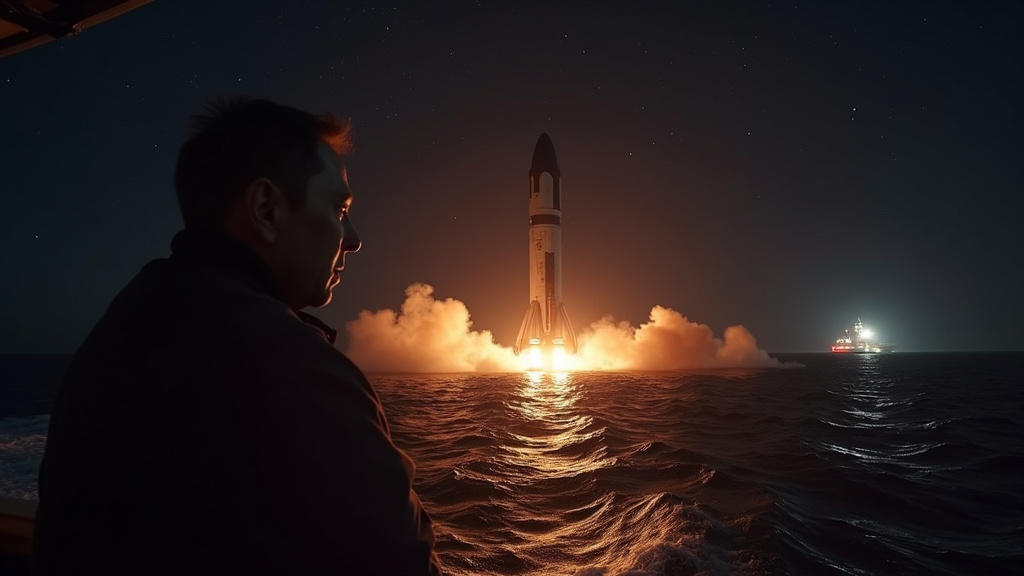SpaceX achieved a significant milestone on August 26, 2025, with its tenth Starship test flight, culminating in the successful powered splashdown of the Starship upper stage in the Indian Ocean and a controlled landing for the Super Heavy booster in the Gulf of Mexico.
This highly anticipated launch from Starbase, Texas, marked a critical turning point for the program, demonstrating progress towards SpaceX’s ambitious goals of lunar missions and eventual human settlements on Mars. The 403-foot-tall, fully reusable rocket system, the world’s most powerful, met every major objective, providing invaluable data crucial for refining future designs and operations. This success represents a considerable leap forward following a series of previous setbacks.
Mission Milestones Achieved
The tenth integrated test flight, designated IFT-10, commenced with the Super Heavy booster igniting all 33 of its Raptor engines, lifting the massive vehicle off the launch pad at 6:30 p.m. CT. The ascent proceeded smoothly, culminating in a successful hot-staging maneuver where the Starship upper stage ignited its six Raptor engines, separating from the booster to continue its journey into space. A key objective of this mission was the first-ever deployment of a test payload from Starship; eight dummy Starlink satellites were successfully ejected from the vehicle’s bay, showcasing the functionality of its unique ‘PEZ dispenser’ mechanism. Furthermore, the Starship upper stage successfully executed a second in-space relight of a Raptor engine, a vital capability for deorbiting and landing procedures.
Dual Splashdowns: Gulf and Indian Ocean
Following stage separation, the Super Heavy booster began its return trajectory, performing a boostback burn and initiating its landing sequence. In a controlled test of failure scenarios, one of its center engines was intentionally disabled during the final phases of its landing burn, with a backup engine compensating. The booster successfully hovered above the water before shutting down its engines and splashing down in the Gulf of Mexico, though it reportedly exploded upon impact.
Meanwhile, the Starship upper stage continued its suborbital trajectory, entering the critical phase of atmospheric re-entry. The vehicle endured the intense heat and forces, ultimately executing a powered landing burn and a soft splashdown in the Indian Ocean, northwest of Western Australia. This marked the first time a Starship upper stage had successfully completed a controlled splashdown in the ocean after a mission.
Re-entry Challenges and Data
While the mission was largely successful, the Starship upper stage sustained damage during its fiery re-entry. Reports indicate that a protective ‘skirt’ around the engine bay broke apart, and at least one control flap experienced partial melting near its hinge. Despite this structural wear, the vehicle remained controllable throughout the descent and executed its planned maneuvers, providing critical data on heat shield performance and structural integrity under extreme stress. SpaceX intentionally stressed vulnerable areas by removing some heat shield tiles to gather this essential information for future improvements.
A Turning Point for SpaceX
This tenth flight test represents a significant turning point for the Starship program, especially after a year marked by several failures, including multiple flight test losses and an explosion during ground testing. The ability to achieve all major mission objectives, including a successful payload deployment and controlled re-entry and splashdown, demonstrates substantial progress in the development of this complex technology. This achievement positions SpaceX closer to its objectives of supporting NASA’s Artemis missions to the Moon and realizing Elon Musk’s long-term vision of establishing human presence on Mars. The data gathered from this flight will be instrumental in refining the designs of both the Starship and Super Heavy stages, pushing the boundaries of reusable rocket technology.
Elon Musk’s Vision
Elon Musk, founder and CEO of SpaceX, has consistently emphasized an iterative development approach, believing that rapid testing and learning are key to achieving groundbreaking goals. Following the successful flight, Musk shared his excitement, stating that “[e]ach launch provides invaluable real-world performance data crucial for refining the Starship system”. He reiterated his belief that a future as a spacefaring civilization is infinitely more exciting, driving the development of Starship for interplanetary travel and the establishment of a self-sustaining city on Mars.
Conclusion
The successful tenth flight test of SpaceX’s Starship is a testament to the company’s relentless pursuit of innovation in space technology. By demonstrating key capabilities such as payload deployment, in-space engine relighting, and controlled atmospheric re-entry and splashdown, SpaceX has made substantial progress. While challenges such as re-entry damage still need further refinement, the data acquired from this mission is paramount. This achievement fuels optimism for the program’s trajectory and reinforces its pivotal role in humanity’s ongoing journey to explore and inhabit the Moon, Mars, and beyond. It is a top piece of technology news that will undoubtedly be closely watched in the coming months.





